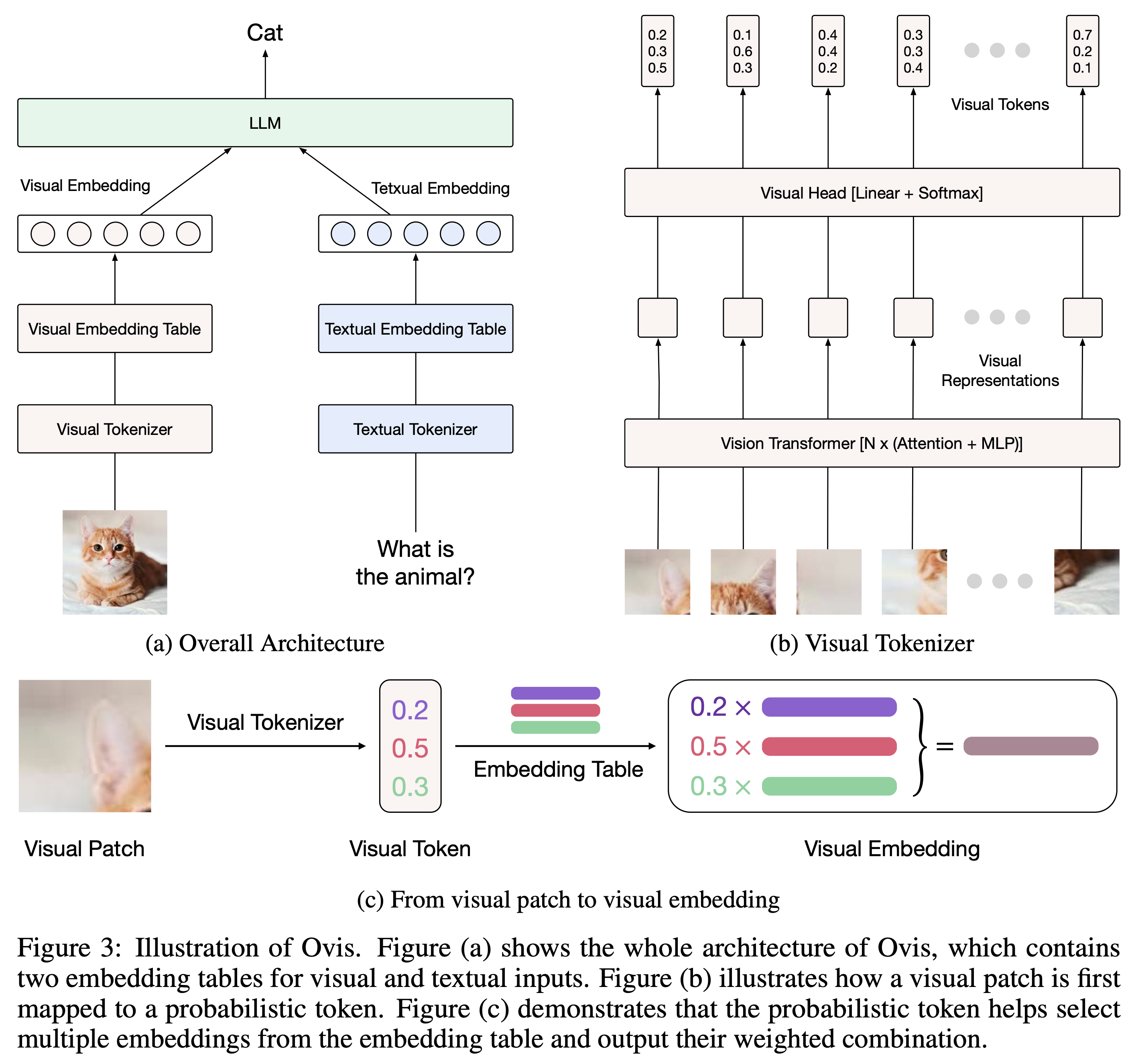---
license: apache-2.0
datasets:
- AIDC-AI/Ovis-dataset
library_name: transformers
tags:
- MLLM
pipeline_tag: image-text-to-text
---
## Introduction
Ovis is a novel Multimodal Large Language Model (MLLM) architecture, designed to structurally align visual and textual embeddings. For a comprehensive introduction, please refer to [Ovis paper](https://arxiv.org/abs/2405.20797) and [Ovis GitHub](https://github.com/AIDC-AI/Ovis).

## Model
Built upon Ovis1.5, Ovis1.6 further enhances high-resolution image processing, is trained on a larger, more diverse, and higher-quality dataset, and refines the training process with DPO training following instruction-tuning.
| Ovis MLLMs | ViT | LLM | Model Weights |
|:------------------|:-----------:|:------------------:|:---------------------------------------------------------------:|
| Ovis1.6-Gemma2-9B | Siglip-400M | Gemma2-9B-It | [Huggingface](https://huggingface.co./AIDC-AI/Ovis1.6-Gemma2-9B) |
## Performance
With just **10B** parameters, Ovis1.6-Gemma2-9B leads the [OpenCompass](https://github.com/open-compass/VLMEvalKit) benchmark among open-source MLLMs within **30B** parameters.

## Usage
Below is a code snippet to run Ovis with multimodal inputs. For additional usage instructions, including inference wrapper and Gradio UI, please refer to [Ovis GitHub](https://github.com/AIDC-AI/Ovis?tab=readme-ov-file#inference).
```bash
pip install torch==2.2.0 transformers==4.44.2 numpy==1.24.3 pillow==10.3.0
```
```python
import torch
from PIL import Image
from transformers import AutoModelForCausalLM
# load model
model = AutoModelForCausalLM.from_pretrained("AIDC-AI/Ovis1.6-Gemma2-9B",
torch_dtype=torch.bfloat16,
multimodal_max_length=8192,
trust_remote_code=True).cuda()
text_tokenizer = model.get_text_tokenizer()
visual_tokenizer = model.get_visual_tokenizer()
# enter image path and prompt
image_path = input("Enter image path: ")
image = Image.open(image_path)
text = input("Enter prompt: ")
query = f'\n{text}'
# format conversation
prompt, input_ids, pixel_values = model.preprocess_inputs(query, [image])
attention_mask = torch.ne(input_ids, text_tokenizer.pad_token_id)
input_ids = input_ids.unsqueeze(0).to(device=model.device)
attention_mask = attention_mask.unsqueeze(0).to(device=model.device)
pixel_values = [pixel_values.to(dtype=visual_tokenizer.dtype, device=visual_tokenizer.device)]
# generate output
with torch.inference_mode():
gen_kwargs = dict(
max_new_tokens=1024,
do_sample=False,
top_p=None,
top_k=None,
temperature=None,
repetition_penalty=None,
eos_token_id=model.generation_config.eos_token_id,
pad_token_id=text_tokenizer.pad_token_id,
use_cache=True
)
output_ids = model.generate(input_ids, pixel_values=pixel_values, attention_mask=attention_mask, **gen_kwargs)[0]
output = text_tokenizer.decode(output_ids, skip_special_tokens=True)
print(f'Output:\n{output}')
```
## Citation
If you find Ovis useful, please cite the paper
```
@article{lu2024ovis,
title={Ovis: Structural Embedding Alignment for Multimodal Large Language Model},
author={Shiyin Lu and Yang Li and Qing-Guo Chen and Zhao Xu and Weihua Luo and Kaifu Zhang and Han-Jia Ye},
year={2024},
journal={arXiv:2405.20797}
}
```
## License
The project is licensed under the Apache 2.0 License and is restricted to uses that comply with the license agreements of Gemma2 and Siglip.

